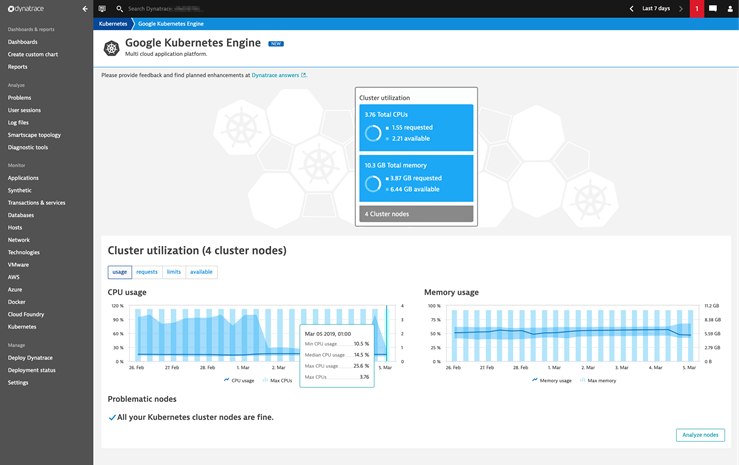Dynatrace Dives Deeper into Kubernetes
Dynatrace has deepened its commitment to Kubernetes by adding dashboards, additional filters and metrics for monitoring both Kubernetes clusters and individual nodes. The data is then fed into the company’s Davis artificial intelligence (AI) engine to surface additional actionable insights.
Dave Anderson, senior vice president of marketing for Dynatrace, says the company is trying to close many of the visibility gaps that stem from deploying Kubernetes clusters. A SmartScape mapping tool leverages a single instance of Dynatrace agent software running on the Kubernetes cluster to map all the dependencies that can exist in a microservices-based application deployed on Kubernetes cluster. The map is then updated automatically in real time as changes are made to the underlying environment, he says.
In general, Anderson notes the rise of microservices and containers is forcing two issues. The first is the need to apply monitoring and management tools more broadly to both applications and the infrastructure on which they run. Historically, most organizations only monitored their most important mission-critical applications because of cost concerns. However, as a new generation of cloud-native applications is deployed in production environments, the complexity of these applications requires organizations to employ monitoring tools more broadly, he says.
The second issue microservices is forcing is the need for increased reliance on AI. Anderson says the level of fatigue associated with managing these environments has reached a level where the average administrator is a lot more open to embracing AI to enable them to troubleshoot applications and the hosts they run on.
In general, Anderson says many developers continue to rely on open source tools such as Prometheus to monitor their applications during the development process. Most enterprise IT organizations, however, prefer to rely on commercial services such as Dynatrace once those applications are deployed in a production environment. Not only are the open source tools overly complicated to set and maintain, but also most enterprise IT organizations can rely on Dynatrace to monitor and manage both legacy and cloud-native applications, he says.
The challenge that many of these IT teams will face in the months ahead is the tendency of each development team to spin up their Kubernetes cluster. In some cases, DevOps teams may be able to deploy multiple applications on the same Kubernetes cluster. Application owners, however, often insist on having their own dedicated Kubernetes cluster.
It’s too early to say how the rise of Kubernetes will impact roles and responsibilities within IT organizations. But there tends to be a high degree of correlation between the presence of Kubernetes clusters and organizations that have embraced best DevOps practices. Organizations that have embraced DevOps tend to prefer tools that provide more holistic views of the overall IT environment, which invariably leads to more actionable insights.
In the meantime, the more visibility IT teams have into Kubernetes, the more likely they will accelerate adoption. After all, the one thing most enterprise IT teams can’t abide is a black box they can’t see inside.





